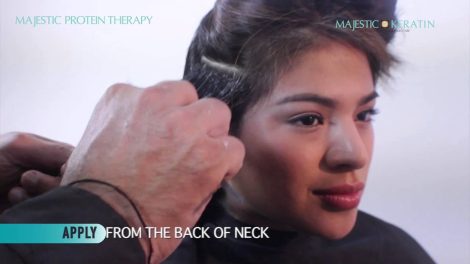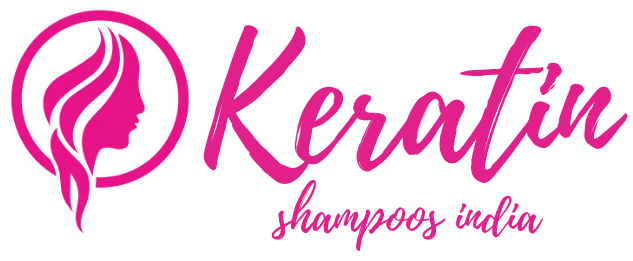Best Shampoo For Keratin Treated Hair In India with 30+ Brands, Online Since 2019 🎉
What is a keratin shampoo?
What is a keratin shampoo?
Keratin shampoo is a shampoo with the protein ‘keratin’ infused in it. When you check the ingredient list on the back of the flask, you will mostly find the words ‘hydrolysed keratin’ or ‘keratin amino acids’ on ingredients list.
There are two kinds of keratin shampoos. The most have “keratin” as a supporting ingredient. And some have keratin as the main ingredient. The latter is mostly called ‘keratin shampoo’ by most brands.
What is keratin and what does it do for your hair?
Keratin in human hair is a protein that consists of 19 amino acids. One of these acids is cysteine and deserves a little more attention. Cysteine is rich in sulfur and plays a major role in the cohesion of cells in the hair.
Just for your knowledge Your hair contains 8% moisture, 3% minerals and 89% Keratin. Let that sink in. 89%.
Indian hair contains 90% keratin
So your hair consists mainly out of keratin. It’s probably no surprise that keratin is responsible for the internal and external structure of your hair. Keratin, therefore, is responsible for your hair’s strength and resilience.
You can imagine that if some keratin is removed from your hair, the structure becomes unstable and your hair becomes weaker. The result is damaged hair. Under the microscope, your hair looks like,
- A corn cob that lacks a few kernels.
- A road with cracks and potholes.
- A limestone with little holes in it.
I think you get the idea. Anyway.
When your hair is in a condition like that, keratin hair products will be of use to you. They fill up the holes and undo some of the damage. This makes your hair stronger again and the chance of future breakage is reduced. Moreover, hair that’s rich in keratin usually is a lot smoother and free of frizz.
The difference between keratin and vegetable ingredients in hair care, is that keratin fills up the broken wall with new bricks, where vegetable ingredients only plaster the surface. The latter obviously looks alright, but is less stable.

3 – Where does keratin in hair products come from?
The best keratin for hair repair comes from human hair. However, within Europe it is no longer allowed to use human protein (or other human ingredients) in products.
So now, pure, authentic keratin can only be obtained from animals. It’s impossible to get keratin from plants and flowers. Even if there’s a trace of protein, it’s composition is not identical to the keratin in human hair. This means it will not be of any benefit except for making a nice marketing story.
There are two types of keratin from animals:
- a-Keratin: found in vertebrates
- b-Keratin: found in reptiles and birds
Our Keratin is sourced from cashmere wool, the same material used for sweaters.
The cashmere wool is collected and hydrolyzed. Since it contains the same amino acid composition as the keratin in human hair (except for one), it has the potential to repair your hair. And very important about the collecting process: no animals were harmed since the wool is collected during the spring molting season when the goats naturally shed their winter coat.
b-Keratin contains less amino acids than human hair contains, and is therefore less suitable for hair repair.
4 – Should I buy a keratin shampoo in India?
If your hair is weak and damaged, you should consider buying hair products enriched with keratin. It might be wise to do so as well if you do some of the things below on a regular basis:
- Bleach, colour or highlight your hair.
- Chemical relax of perm your hair.
- Style your hair with hot styling tools.
- Brush or comb your hair.
- Swim in water with chloride or salt.
- Expose your hair to the sun for a few hours per week.
5 – What’s the difference between expensive and affordable keratin shampoo price?
The main difference is the quality of the keratin. And that quality can be defined based on three things:
First, the size of the keratin molecules. The smaller the molecules, the better (and deeper!) they can enter the hair shaft. And the deeper they get, the more damage they can repair and the stronger your hair becomes. It also determines how well the keratin molecules adhere to your hair.
Second, the affinity of the keratin with the human hair. The better keratin can attach itself to the human hair, the stronger your hair gets. Also, your hair is less prone to damage in the period afterwards.
Third, the amount of active amino acids in the keratin that can fulfil their own functions. The 19 amino acids in keratin all have their own functions. For example, Cysteine connects all particles in the hair and locks in moisture. Tyrosine on the other hand makes sure that color molecules from hair dye can attach to the hair.
So we can conclude the following:
- The smaller the keratin molecules and
- The better the affinity with human hair and
- The higher the amount of active amino acids…
…the better the quality of the keratin shampoo.
Now, we could say that the more expensive keratin shampoos automatically contain higher quality keratin. However, we simply don’t know the details for every brand so we can’t say this rule goes for all the brands out there. And unfortunately… if a product contains 1% of an ingredient, companies can make the same statement about it as products that contain 5% of that very same ingredient.
L’ANZA is one of the few brands that was open about it’s production process. They explained how they guarantee the quality.
The moleculair weight of their keratin is between 150 mw and 300 mw and that means the keratin molecules are very small. We do not know a brand that uses smaller molecules. Also, a molecule with a weight over 300 mw can not penetrate the hair shaft!
L’ANZA maximized the affinity of their keratin with human hair. Plus their keratin contains all 19 amino acids that fulfill all of their functions. On top of that, they created a special technique that makes keratin adhere to your hair twice as long (in comparison to other brands).
6 – Can keratin be bad for your hair?
There has been some chatter that too much keratin protein is bad for your hair. People wonder what happens if your hair absorbs to much keratin. For example, can your hair be oversaturated?
It is important to understand that hair can only absorb a certain amount of keratin proteins. After that, it simply can not accept any more. It’s just like a sponge that can only absorb a maximum amount of water. So you do not have to worry about oversaturation or ‘over-proteinizing’ the hair.
The reason why hair can’t absorb more is because of the following. Damaged parts of the hair are negatively charged. Healthy parts of the hair are positively charged. Keratin only attaches itself to negatively charged areas. So once the hair is healthy again, keratin can not attach itself anymore.
However, some brands use inferior protein that makes the hair hard, crunchy and dry. Furthermore, these products mostly contain low quality formulas with inferior keratin. This means the protein can’t enter the hair and accumulates on the surface of the hair. There it dries and becomes crusty.
Unfortunately we don’t know which brands use low quality keratin.
But we do believe that the keratin in L’ANZA’s products is great for your hair.
7 – Does best keratin shampoo really work?
The main function of a shampoo is cleansing the hair and scalp. But many brands claim that their shampoos have additional functions. For example, creating volume, stimulating hair growth and repairing the hair. A lot of these functions are being questioned.
The most important argument implies that additional functions can’t work because shampoo is usually washed out before additional functions can begin to work. Even if the shampoo is full of amazing ingredients, there is not enough time to deposit them in the hair. Plus ‘water’ is a barrier that ingredients need to get through in order to penetrate the hair.
The same question can be asked for keratin shampoos: do keratin molecules have enough time to reach the hair before the shampoo is washed out?
We asked our experts about this and this is their point of view:
“First of all, a conditioner or treatment is by far a better way to treat the hair than a shampoo. Also, it’s true that most keratin in hair products is not suitable for shampoos. This is because the molecules are to big and don’t fit in the hair. But even if they were to fit, sometimes the molecular composition and it’s properties are not optimal for penetration of the shaft.”
But, It is possible!
Biochemist Robert deOur Expertsfigured this out about 40 years ago. He invented the revolutionary Keratin Bond System. By hydrolyzation with botanical extracts, Robert produced molecules not only small enough to enter the shaft. But they were also double positively charged and would adhere to your hair twice as long (in comparision to other brands). Because of this, molecules are deposited on the hair faster and won’t be washed away easily by the cleansing agents of the keratin shampoo.
Nowadays,Our Expertsalso works with the so called Nano Science Technology. This makes keratin and other ingredients so small that it’s perfect for optimal deposition and penetration of the hair.
So… do keratin shampoos really work? We can’t say all keratin shampoos work, because it depends on:
- The quality of the keratin in the shampoo.
- The percentage of keratin in the shampoo.
- The quality of the formula in the shampoo.
But we dare to say that our brands keratin shampoos really work!
8 – Does keratin shampoo straighten your hair?
There are some hair straightening products on the market that have the name ‘keratin’ in it. Think of the keratin treatments. So some people assume that keratin is the ingredient that straightens the hair. But this isn’t true.
The only way to truly straighten the hair is through heat or chemicals that break the hair’s inner disulfide bonds. A keratin shampoo can not straighten your hair!
You might wonder… why is a keratin treatment called like that, if it isn’t the keratin that straightens your hair? That is actually a marketing story. Stuff like formaldehyde (illegal in Europe) are the only things that can change your disulfide bonds. But a formaldehyde treatment doesn’t sound so persuasive, now does it?
